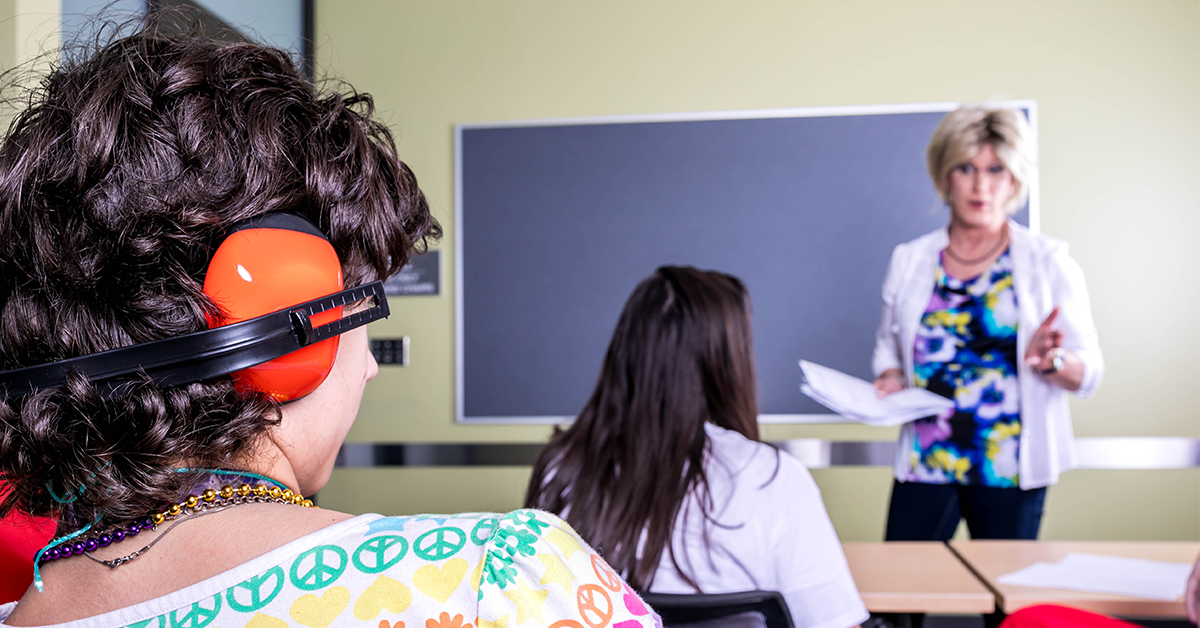I’m a Trans, Disabled Young Person, Not One or the Other

I identify as non-binary, which means that I don’t identify as exclusively male or female. I am also disabled. These identities are inseparable to me. However, many people assume that these identities have no relationship and create resources or access that only serve a fraction of who I am.
My gender expression is femme, and I enjoy dressing myself accordingly. But my presentation hinges upon my disability. I have chronic pain conditions that limit my ability to walk, which means stairs are generally inaccessible to me. Using the stairs results in immense pain and sometimes leads me to pass out. I also walk with canes and crutches to manage my conditions. Certain clothing and fabrics, usually boxy clothing with rough, tight fabrics are off limits to me due to how much they amplify my chronic pain. Looser, flowier styles work better for me because I can move easier with or without my mobility aids.
When I share that I am a trans person who was assigned female at birth, the resources automatically shown to me assume that I prefer things like button downs and binders. While these resources are necessary for many, they ignore the fact that my needs as a trans person do not include things like binders, which aren’t for me in part due to my disability.
Sometimes my needs are forced into conflict, and I have to choose between my safety and comfort as a trans person, and my physical health as a disabled person.
For example, there were no gender-neutral bathrooms at my school, but there were a set of gendered bathrooms that were rarely used. Although gender-neutral bathrooms would make me much more comfortable as a non-binary student, using the empty, gendered bathroom was my best option when it came to avoiding harassment. (If it were easy as that, this story might end here, but it wasn’t.) These bathrooms were located on the opposite side of campus from most of my classes and required stairs to access, forcing me to choose between my need of not being harassed and my need to avoid stairs.
The result: I often chose to try and avoid bathrooms at all.
I’m asking us to push beyond the narrative that bodies are the same and that there’s one way to address one’s bodily needs. We must hold space for non-conformity, bodies with many identities, and people with many needs. My needs as a white, non-binary, disabled person are different from the needs of a white able-bodied trans person or a non-binary disabled person of color. There are nuances within my needs that encompass all of my identities. We must meet the needs in the nuances that address the differences that we hold.
Accommodations for trans people OR disabled people OR people of color isn’t enough. This type of thinking separates identities that are inextricably linked. Disability justice is LGBTQ justice is racial justice is healthcare justice, and so on. In working towards social justice, we must recognize these as intertwined, and understand that addressing these individually, instead of collectively, further marginalizes those with multifaceted identities rather than work towards collective liberation. I don’t want to have to choose between using the stairs and risking passing out from the pain or taking the elevator and having to interact with the kid who always harasses me for my gender and disability.
I encourage you to think critically about how multiple identities intersect, especially in a school context. Does your school have gender-neutral bathrooms? If so, are they close and accessible, or far and isolated? Does the clothing drive your GSA is running for trans youth include a push for sensory-friendly or more neutral clothing? Does the history timeline you are creating for your GSA or history class include trans people of color, or is it white-centric or tokenizing? These are just a few examples of holding space for intersections in your work.
For more, I encourage you to check out GLSEN’s resources on supporting trans students and how to be a better ally. And when you do, always keep in mind accessibility and inclusion for all.
Niles Clipson is a member of GLSEN’s National Student Council.
